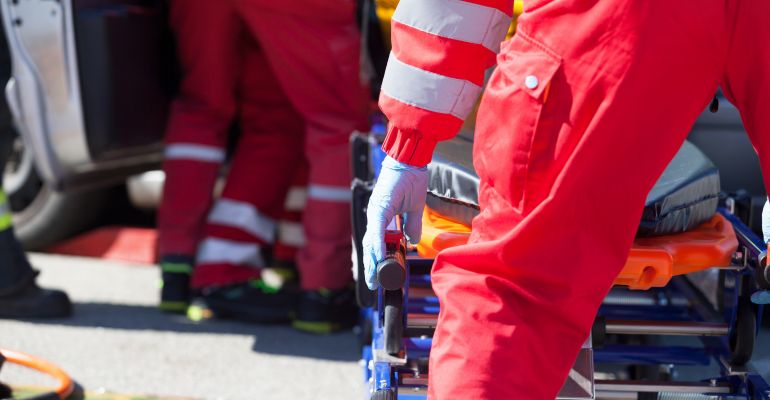Transportation is a fundamental but crucial step in obtaining continued health care and medication, especially for patients with chronic illnesses. To offer evidence-based treatment, clinician visits, medication access, and treatment plan updates are required. However, without transportation, clinical procedures result in delays. Such intervals in care can result in a lack of appropriate medical treatment, chronic illness exacerbations, or unmet health-care demands, all of which can add up to poor health outcomes.
Ground and air rescue, rotary-wing (HEMS) and fixed-wing (AEMS) emergency medical services face unprecedented problems during the pandemic. While there are various suggestions for safety precautions during in-hospital emergency operations including tracheal intubation, there is insufficient guidance for the pre-hospital setting. Furthermore, presently no documented guidelines on how to securely transfer COVID-19 patients exist.
Unfortunately, the risk of disease transmission for aeromedical crew members is higher than for in-hospital healthcare providers, mainly attributed to the prehospital setting's lack of information, resources, and space, as well as aerosol-generating procedures like airway management and ventilation being one of the main tasks. During air travel, different measures are employed to avoid transmission from patients with extremely contagious illnesses. The experience and recommendation of the Swiss Air Rescue (REGA) and subsequent recommendations for COVID-19 and aeromedical transport have provided an instance in which measures can be adopted to avoid transmission.
Maintaining stringent guidelines
According to an article published in the Scandinavian Journal of Trauma, Resuscitation and Emergency Medicine during HEMS operations, every air rescue provider should define detailed SOPs for the usage and handling of personal protective equipment. With a large number of infected patients and persons with uncertain COVID-19 status, during the current pandemic, rigorous adherence to these guidelines on every mission is critical. Every crew member should receive simulation training on these unique procedures to prevent infection since this has been shown to promote adherence to the SOP.
REGA has not used closed suction catheters on main missions or for hospital transfers, secondary transport, during the COVID-19 pandemic, and they are avoided even if they are pre-installed, due to the potential of aerosol formation from mobile suction equipment. Furthermore, most COVID-19 patients, without bacterial superinfection, had only minimal bronchial secretion production.
For secondary transfer of COVID-19 patients, air rescue providers use a variety of technologies, including open transport systems that allow direct patient treatment by medical crews wearing PPE throughout the journey. Patients with other highly contagious and deadly diseases, such as viral hemorrhagic fever, are transported using alternately closed transport methods, known as air transport isolator systems. However, considerations should be made on working in full PPE during the transport of COVID-19 patients during secondary missions. These usually extend over regular hours especially in fixed-wing ambulances or helicopters and are exceedingly demanding and physically stressful for the medical crew, which can lead to medical errors. Furthermore, every movement must be closely monitored to avoid infection transmission by accident, for example, contact with one’s face with contaminated gloves.
As a result, despite the greater costs and logistical difficulties, the employment of a PIU for the aeromedical transport of patients with potential or proven COVID-19 on secondary missions, fixed-wing ambulances, or long-term secondary HEMS missions, offers significant benefits.
Patients can also be transported faster with closed PIUs as fixed-wing ambulances and helicopters do not require further disinfection between transportation. Another benefit of compact PIUs is the ease with which they may be transferred from an airplane to an ambulance or rescue chopper, or vice versa. As a result, all teams involved in transporting these patients can be effectively safeguarded, and the FFP2/3 respirators that are now available can be reserved for use in hospitals.
The consensus is SOPs for preventing infection transmission during COVID-19 or other future pandemics for primary HEMS missions should be based on current recommendations from national medical societies/authorities, customized to specific HEMS mission situations, and trained in simulation. Small closed PIUs may be advantageous for secondary aeromedical transport of non-intubated or intubated COVID-19 patients in fixed-wing ambulances, or for long-term HEMS missions.

